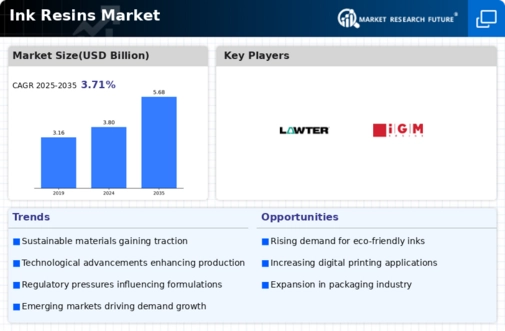Leading market players are investing heavily in research and development in order to expand their product lines, which will help the ink resins market grow even more. Market participants are also undertaking various strategic activities to expand their footprint, with important market developments including new product launches, contractual agreements, mergers and acquisitions, higher investments, and collaboration with other organizations. To expand and survive in a more competitive and rising market climate, the ink resins industry must offer cost-effective items.
Manufacturing locally to minimize operational costs is one of the key business tactics manufacturers use in the ink resins industry to benefit clients and increase the market sector. In recent years, the ink resins industry has offered some of the most significant advantages to medicine.
Major players in the ink resins market, including Lawter (US), BASF SE (Germany), Royal DSM NV (Netherlands), DowDuPont Inc (US), Evonik Industries AG (Germany), Hydrite Chemical (US), Arizona Chemical Company, LLC (US), Arakawa Chemical Industries, Ltd (Japan), Indulor Chemie GmbH (Germany), IGM Resins, Inc. (The Netherlands), KRATON CORPORATION (US), and US-Polymers-Accurez LLC (US) and others, are attempting to increase market demand by investing in research and development operations.
BASF SE (Germany), At BASF, people are the key to long-term success, and everyone has talent. They give their employees the resources, direction, and chances they need to advance and succeed professionally and personally. BASF creates chemistry by giving the customer the assistance required to perform at their peak and achieve their goals. After all, customer success is correlated with BASF. Whatever career path customers want, BASF is a fantastic place to start.
DowDuPont Inc (US), Often abbreviated as DuPont, the French-American industrialist and chemist Éleuthère Irénée du Pont de Nemours founded the multinational chemical company in 1802. The business began as a significant supplier of gunpowder and later played a significant role in the growth of Delaware. In the 20th century, DuPont produced a variety of polymers, including Vespel, neoprene, nylon, Corian, Teflon, Mylar, Kapton, Kevlar, Zemdrain, M5 fiber, Nomex, Tyvek, Sorona, Corfam, and Lycra. Its scientists also produced a variety of chemicals, most notably Freon (chlorofluorocarbons), for the refrigerant. Additionally, it produced synthetic paints and pigments like ChromaFlair.


















Leave a Comment